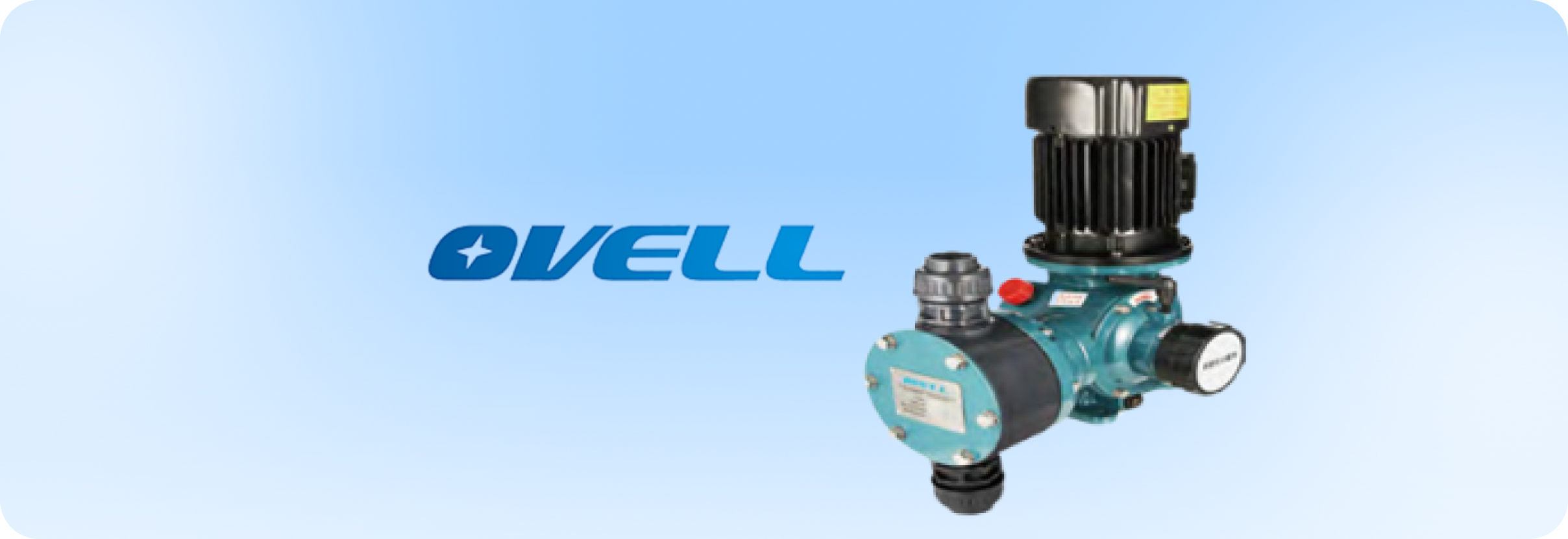
Mon - Fri: 9:00 - 19:00 / Closed on Weekends

AUS: +61 431 085 666
USA: +64 21 480 290


In countless industrial processes, the difference between success and failure, consistency and variability, often hinges on precision fluid control. Applications such as chemical dosing, specialised blending, water treatment, and laboratory processes demand not just fluid transfer, but the exact, repeatable delivery of specific fluid volumes. Unlike general transfer tasks, where approximate flow rates suffice, metering and dosing require an unwavering commitment to accuracy. In these critical scenarios, the choice of pump technology is paramount. An Ovell diaphragm pump stands out as a leading solution, engineered specifically to meet these stringent requirements for precise volumetric control.
In this article, we will delve into how Ovell diaphragm pumps are designed to ensure accuracy, repeatability, and reliable delivery for specific quantities of fluid, fundamentally distinguishing their role from simple fluid movement. We will explore the inherent advantages of double diaphragm pump technology and the specific features that make Ovell pumps indispensable for even the most sensitive and demanding metering and dosing applications.
The Imperative of Precision
While a vast array of pumps can move fluids from point A to point B, true "precision" in metering and dosing implies several critical characteristics:
In industries where specific ratios are crucial for chemical reactions, product formulation, or regulatory compliance (e.g., adding disinfectant to potable water), sacrificing precision can lead to off-spec products, environmental non-compliance, safety hazards, or significant material waste. This is where the inherent design of a diaphragm pump truly shines.
The fundamental design of a diaphragm pump makes it inherently well-suited for precise metering and dosing, setting it apart from dynamic pumps like centrifugals.

Ovell diaphragm pumps incorporate specific design elements and technologies that elevate their precision capabilities for demanding metering and dosing tasks.
Optimised Volumetric Efficiency and Stroke Control
The consistency of the displaced volume per stroke is critical. Ovell pumps are engineered with optimised chamber geometries to maximise volumetric efficiency, ensuring that virtually all fluid drawn in is expelled.
Superior Valve Design and Sealing
The performance of the check valves (ball or flap valves) at the suction and discharge ports is vital for preventing backflow and ensuring accurate volumetric transfer. Ovell pumps use robust, high-integrity valve designs crafted from materials compatible with the fluid (e.g., PTFE, Viton, Santoprene for a chemical diaphragm pump). This ensures quick, reliable sealing that prevents slippage or loss of prime, directly contributing to dosing accuracy and system reliability.
Material Compatibility for Diverse Fluids
Precision dosing often involves aggressive chemicals or highly pure substances. Ovell, as experienced diaphragm pump manufacturers, offers pumps in a wide array of wetted materials – including polypropylene, PVDF, stainless steel, and specialised elastomers for diaphragms and valve balls. This ensures that the pump's components are chemically compatible with the fluid being handled, preventing corrosion, degradation, and contamination, all of which would compromise dosing accuracy and pump longevity.
Effective Pulsation Control (Dampeners)
While diaphragm pumps inherently create a pulsating flow due to their reciprocating action, managing these pulsations is crucial for consistent dosing and protecting downstream equipment. Integrating a pulsation dampener into the discharge line smooths out the flow, transforming the intermittent discharge into a more continuous stream.
This vastly improves the accuracy of flow meters, enhances the consistency of dosing into a process, and reduces stress on piping and instrumentation, making the air operated double diaphragm pump even more versatile for precision work.
The demand for precise volumetric control spans numerous industries, and Ovell diaphragm pumps are ideally suited for these challenging applications:
Both pneumatic diaphragm pump and electric diaphragm pump models from Ovell offer precision capabilities, but their optimal use cases for dosing can differ.
Pneumatic Diaphragm Pump (AODD)
Advantages for Dosing
Considerations: Requires a reliable supply of clean, dry compressed air. Flow rate can be influenced by fluctuations in air pressure if not properly regulated.
Electric Diaphragm Pump (EODD)
Advantages for Dosing
Considerations: Requires electrical power, which might not be suitable for all hazardous locations without specific explosion-proof ratings.
Ovell double diaphragm pump manufacturers often provide both types, allowing clients to select the best fit for their specific precision requirements and operational environment.
Ovell's commitment to engineering excellence positions its diaphragm pumps as a leading choice for accurate metering and dosing applications.
Our designs prioritises:
This dedication ensures that whether you choose an air operated double diaphragm pump or an electric diaphragm pump, you're investing in a solution that powers precision in your most critical processes.
In an industrial landscape where exact volumetric control is non-negotiable, Ovell diaphragm pumps provide the reliable, accurate, and repeatable solutions needed for critical metering and dosing applications. Their inherent positive displacement design, coupled with unique features for optimised volumetric efficiency, superior valve performance, comprehensive material compatibility, and effective pulsation control, sets them apart.
Whether handling delicate laboratory reagents, precise chemical diaphragm pump injections, or complex blending operations, Ovell diaphragm pumps empower industries to achieve unprecedented levels of process control and product consistency. By choosing an Ovell pump, you are not just selecting a piece of equipment; you are investing in a foundation of precision that drives efficiency, reduces waste, and enhances the overall quality and safety of your operations.